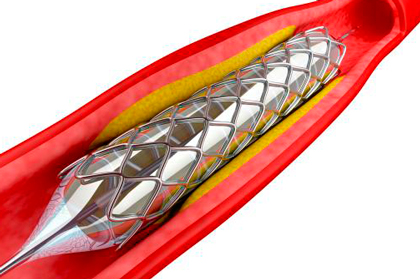Courtesy of Dr. Brian Nazareth Donato.

A search was carried out using Medline, CENTRAL, EMBASE, TCTMD and Cardiosource. There were 9673 patients included, from 12 out of 56 possible studies. These were clinical randomized studies comparing first-generation and second-generation DES with each other and versus BMS, of no less than 50 patients with a follow-up of at least six months.
Direct and indirect comparisons were conducted. The study assessed the incidence of death, myocardial infarction, stent thrombosis, and the need for target vessel revascularization.
At three years of follow-up, there was 47% decrease in the combined events incidence rate (MACE) with second-generation DES versus BMS (objective response [OR] 0.54, 95% confidence interval [CI] 0.34–0.74), triggered by a decrease in the need for target vessel revascularization (OR 0.50, IC 95% 0.31–0.81), the incidence of myocardial infarction (OR 0.59, IC 95% 0.39–0.89), and stent thrombosis (OR 0.59, IC 95% 0.39–0.89) during that period.
There was also a non-significant reduction in both overall and cardiac mortality (OR 0.83, 95% CI 0.60-1.14, and OR 0.88, 95% CI 0.6-1.28, respectively) with the use of second-generation DES versus BMS.
Conclusion
The use of second-generation drug-eluting stents in primary angioplasty is associated with significant reduction of the risk of stent thrombosis, myocardial infarction, and revascularization at 3 years.
Editorial
This is the first meta-analysis comparing the long-term safety and efficacy results of using second-generation DES versus BMS in angioplasty in patients with ST elevation myocardial infarction.
Only two studies have compared directly the use of second-generation DES and BMS as regards safety related to stent thrombosis (EXAMINATION and CONFORTABLE-AMI). The other ten studies included in this meta-analysis compared first-generation DES versus BMS, and first-generation DES versus second-generation DES. Direct and indirect result comparisons were carried out for all of them.
The current use of new antiplatelet regimes unassessed in the analyzed studies could change their results. However, results from a Leaders Free trial sub-study (Eur Heart J. 2016 May 17) with dual antiplatelet therapy for only a month suggest that the difference lies in the stent type.
Original title: Very Late Stent Thrombosis with Second Generation Drug Eluting Stents Compared to Bare Metal Stents: Network Meta-Analysis of Randomized Primary Percutaneous Coronary Intervention Trials
Reference: Femi Philip et al. Catheter Cardiovasc Interv. 2016 Jul;88(1):38-48.
Courtesy of Dr. Brian Nazareth Donato. Buenos Aires British Hospital, Argentina.
We are interested in your opinion. Please, leave your comments, thoughts, questions, etc., below. They will be most welcome.





